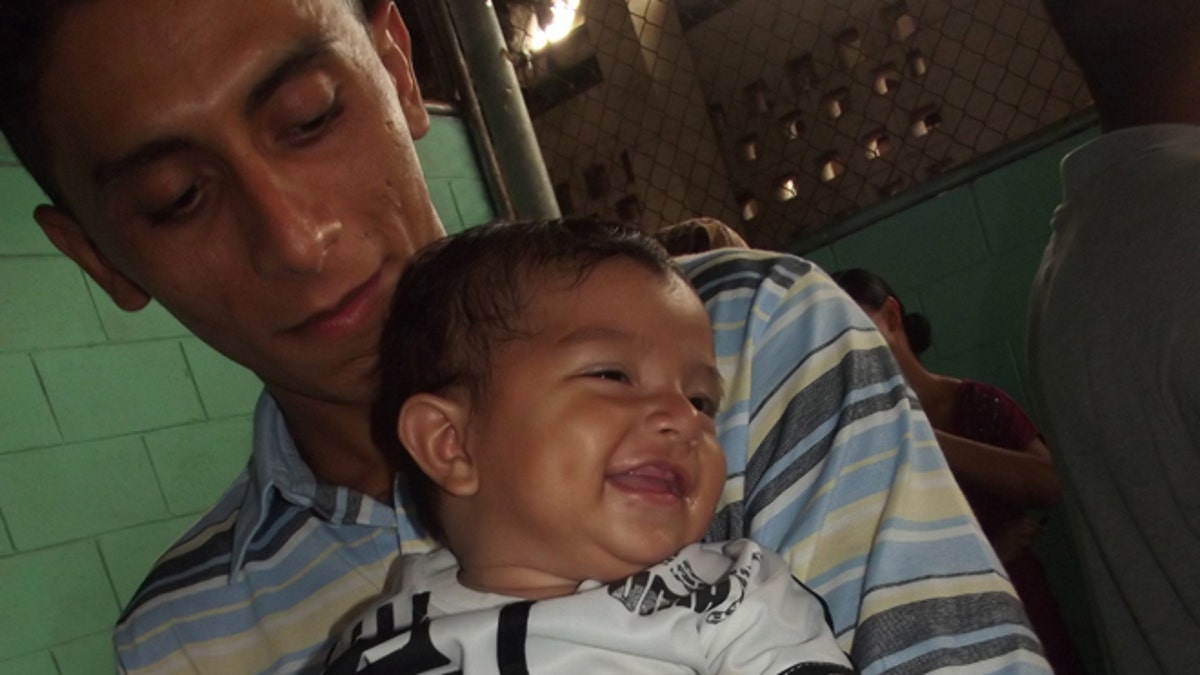
( )
Is peace possible in one of the most violent countries in the world? That’s what an 11-member delegation of U.S.-based urban peace advocates, gang prevention/intervention specialists, and researchers from Los Angeles, Washington D.C., New York City, and San Francisco planned to find out when the transnational advisory group in support of the peace process in El Salvador (TAGSPPES) landed in San Salvador on July 20, 2012.
Their seven-day visit -- which ended Friday, July 27 -- included stops at several prisons and a juvenile facility, including meetings with members of the two biggest gangs in El Salvador: Mara Salvatrucha-13 and 18th Street. Meetings with community leaders, church leaders, officials of nongovernmental agencies, the mass media, factory directors, and government officials were also on the itinerary.
I was a member of this delegation.
Presently El Salvador has seen a 60 percent drop in violence—and some 1,000 lives saved—since a March 2012 truce between the two gangs was declared in one of the country’s largest maximum security prisons. On July 13 in the capital, masked tattooed members from the rival gangs turned in around 80 firearms under the auspices of the Organization of American States. After more than thirty years of conflicts—including a 12-year civil war and then twenty years of intense gang warfare that gave El Salvador the most homicides on the continent—peace now seems to be in the air and in the hearts of its embattled people.
But can peace hold?
For me personally, this is a process worth accessing and assisting. I began research, interviews, and writing nationally published articles on Salvadoran gangs in 1993 after photojournalist Donna De Cesare and I received a Dorothea Lang-Paul Taylor Prize from the Center for Documentary Studies out of Duke University. In 1996, I took part in a national dialogue on Salvadoran youth violence, and helped broker an accord between various MS-13 and 18th Street gang members as well as a number of mayors, church officials, leaders of nongovernmental agencies, and members of the national police.
Unfortunately, this was soon undermined by government anti-gang policies that included the creation of more prisons, gang sweeps, the inculcation of “social cleansing” ideas among the populace, and even the use of extra-legal death squads. By mid-2000s El Salvador instituted “Mano Dura” (Firm Hand) measures (and later Super Mano Dura) that in effect made the violence worse.
Repression simply doesn’t work. What works are real resources and a society that is vested in helping the most violent gang youth lead healthy and meaningful lives -- for the well being of everyone.
Lasting and healthy peace is something I’ve been working on for forty years, since leaving barrio gang life in Los Angeles in the early 1970s and participating in various gang truces and peace efforts among Chicano, African American, Puerto Rican, Native American, Asian, and Central American gangs in Los Angeles, Chicago, and other cities. My work has also extended to Central and South America, Europe, and Mexico (including Ciudad Juárez, on the border where I was born, which was most recently labeled the murder capital of the world).
This time I found a more open and caring attitude from everyone we met in El Salvador, including government officials in the ministries of health, education, and public safety as well as among the heads of the penal system. The gang leaders were sincere and quite clear about their commitment to the peace. A meeting of the minds and hearts of the Salvadoran people would help make this process sustainable and significant, even beyond its borders.
Now where do we go from here?
There is a need for short and long-range actions and policies. Gang leaders in El Salvador have asked for humane prison conditions, medical care, jobs and training and rehabilitation programs. There is a need for businesses to provide jobs and a livable income in one of the poorest countries in the hemisphere. The country needs an expansion of educational opportunities as well as vocational and other training. What about full mental health and drug treatment programs? There is deep trauma to address, as well as orphans and broken families. How about the arts that in my experience has been instrumental in expanding the imaginations of the most troubled communities and allowing creativity to accompany any healing process?
The main argument against any of this is lack of funds. That’s what’s usually exclaimed whenever such strategies and projects are brought up. But there is money—it’s just being wasted on incarcerations, putting youth away, in higher levels of crimes fed by growing poverty and more repressive measures. Besides, peace is necessary if there is to be any vital growth in economic investment leading to real work and social development.
The people of El Salvador may be poor in material means but they are rich in capacities and dreams. If resources are properly aligned, if civil society and government can value what the most marginal and pushed out members of their society have placed in their hands, I'm convinced victory after victory can follow.
Still any truce between warring parties is delicate and poses great challenges. There needs to be short-term and long-term goals. The main aspect to grasp at the moment is, as a July 17, 2012 report from the Washington D.C.-based Washington Office on Latin America concluded, "you don't have to trust the truce to see the opportunity it presents."
